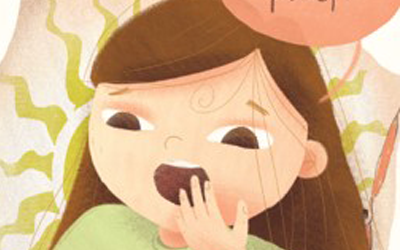Cognitive behavior therapy (CBT) is an effective and evidence-based treatment approach for various mental health conditions, including anxiety disorders. One of the key components of CBT for anxiety is exposure therapy, which involves gradually confronting feared situations or stimuli in a safe and controlled environment. While exposure therapy can be challenging, especially for children, it is often a crucial step towards reducing anxiety and improving overall functioning. In this blog post, we will explore the role of exposure in CBT for children and how it can help them overcome fear.
Understanding Exposure in CBT
Exposure therapy is based on the principle of habituation, which means that when someone is repeatedly exposed to a feared situation or object, their anxiety response will decrease over time. In CBT, exposure is typically conducted in a gradual and systematic way, starting with less anxiety-provoking situations and progressing to more challenging ones. For example, a child with a fear of dogs may first look at pictures of dogs, then watch videos of dogs, and eventually interact with a friendly dog under the guidance of a therapist.
Exposure therapy can be conducted in various formats, such as imaginal exposure (imagining the feared situation), in vivo exposure (experiencing the feared situation in real life), or virtual reality exposure (using technology to simulate the feared situation). The choice of exposure format depends on the individual’s needs and preferences, as well as the availability of resources.
Benefits of Exposure for Children
Exposure therapy has been shown to be highly effective in reducing anxiety symptoms in both adults and children. Research has also found that the benefits of exposure can be long-lasting, with many individuals maintaining their gains even after treatment has ended. Here are some of the specific benefits of exposure for children:
1. Reduced anxiety: Exposure therapy helps children face their fears and learn that they can cope with anxiety-provoking situations. As a result, their anxiety symptoms typically decrease over time.
2. Improved functioning: When anxiety is reduced, children can engage more fully in activities that they previously avoided due to fear. This can include socializing with peers, participating in sports or hobbies, and attending school regularly.
3. Increased confidence: Successfully completing exposure tasks can boost children’s self-esteem and confidence, as they realize that they are capable of overcoming their fears.
4. Generalization of skills: Exposure therapy can help children learn skills that they can apply to other areas of their lives. For example, if a child learns how to cope with anxiety during public speaking, they may be better equipped to handle other stressful situations.
Challenges and Considerations
While exposure therapy can be highly effective, it can also be challenging for children and their families. Here are some of the common challenges and considerations when using exposure in CBT for children:
1. Resistance: Children may be resistant to exposure tasks, especially if they perceive them as too difficult or scary. A therapist can work with the child to address their concerns and provide support throughout the exposure process.
2. Parental involvement: Parents play an important role in supporting their child’s exposure therapy, but they may also have their own fears or concerns about their child’s progress. A therapist can work with parents to provide education and guidance on how to support their child during exposure.
3. Safety concerns: It is important to ensure that exposure tasks are conducted in a safe and controlled environment, and that the child is not placed in harm’s way. A therapist will carefully plan and monitor exposure tasks to ensure that they are appropriate and safe for the child.
Conclusion
Exposure therapy is a valuable component of CBT for children with anxiety disorders. By gradually confronting feared situations or stimuli, children can learn to cope with anxiety and improve their overall functioning. While exposure can be challenging
The link to all of our books aimed at helping parents and children cope with various anxiety, sleep, anger and other difficulties please visit our main page http://www.cbtails.com/




0 Comments